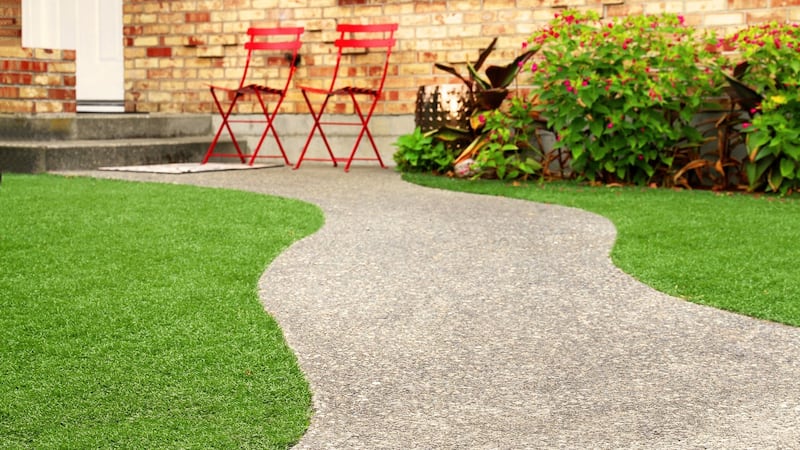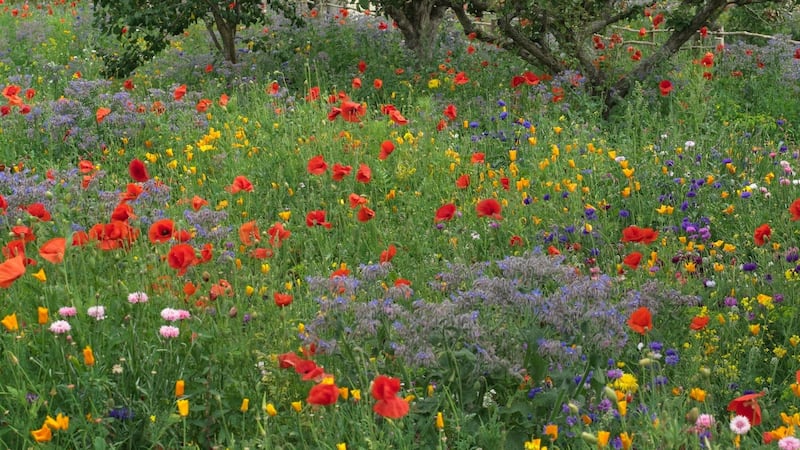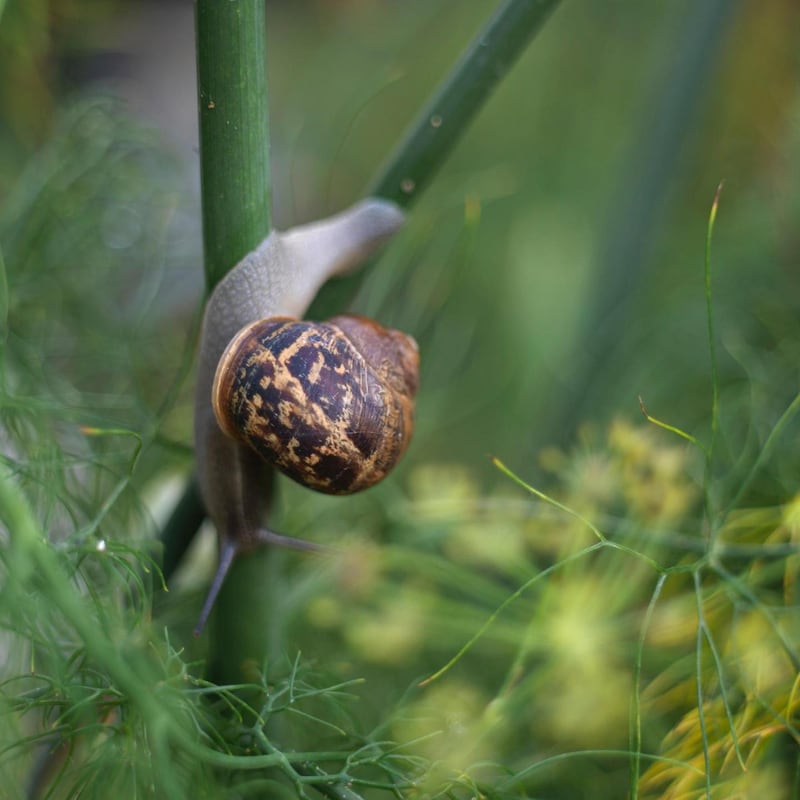After what felt like one of the longest, toughest, wettest, coldest, windiest winters in years, it’s fair to say that spring – yahay! – has finally sprung.
Yet the scars left behind by all of that harsh weather are still painfully clear to see in the nation’s lawns, many of which are muddy, bare-patched, weed-infested ghosts of their former selves. So how to get them ship-shape again for summer?
The good news is that this is an excellent time of year to do just that, using a variety of nature-friendly ways to successfully repair the damage without resorting to the sorts of nasty garden chemicals – selective weed-killers, moss killers, intensive artificial fertilisers – that are bad for the environment and for us.

The time-honoured and most cost-effective method of lawn repair is, of course, to re-sow any bare patches with a generous scattering of fresh lawn seed sourced from your local garden centre. Various mixes are available, designed for a range of growing conditions and intensity of use. The most hard-wearing (best for gardens regularly used by children or pets) contain a high percentage of dwarf perennial ryegrass, prized for its vigour, resilience and ease of establishment; while for a very manicured lawn the mix will typically contain a high percentage of finer fescue-type grasses. Other slower-growing mixes are specifically designed for hard-to-reach areas such as steep banks (thus minimising the need for regular mowing) while there are even some designed to cope with shade. But for the average family lawn, the traditional choice is what’s commonly known as the “Number 2” – a versatile, relatively hard-wearing blend of species suitable for most situations.
Be warned that your lawn will look even more woebegone after scarifying
Whichever you plump for, it’s crucial to create the best soil conditions for it to successfully establish, as otherwise your efforts will all have been in vain. Start the process off by giving your woebegone lawn a very light trim, making sure that the lawnmower’s blades are set to their highest cutting height. Any lower and it will further weaken growth and allow opportunistic weeds to get a foothold. Don’t leave the fresh cuttings on the lawn on this occasion either but collect them to use as a shallow mulch around the roots of established trees and shrubs.
Scarify your lawn
Next, you’ll need to “scarify” your lawn, an odd horticultural term which sounds as if you’re required to terrify the living daylights out of it but actually means using a spring-tined rake or a hired mechanical “scarifier” (best for large lawns,) to remove any moss or “thatch” – yet another strange horticultural term meaning any dead or decaying grass lying close to the roots of the lawn.
If moss and thatch are plentiful in a lawn, they prevent light, air, water and nutrients from reaching its roots, increasing the risk of certain diseases and reducing the production of healthy new grass growth necessary for creating the sort of thick, soft, velvety sward that the best summer picnics are made of. Be warned that your lawn will look even more woebegone after scarifying but don’t panic – it’s just a temporary effect of the tough love it’s received.
Next, you’ll need to use a garden fork to aerate the lawn – especially any bare or poorly-drained areas – by repeatedly pushing the sharp tines of the fork into the ground to a depth of 8-15cm while rocking the handle very gently back and forth. Tedious as it sounds (and if I’m being honest, it is), this will help hugely as regards repairing the damaged soil structure and improving drainage, especially if you finish it off by brushing some sharp sand over the freshly aerated surface. Again, if your lawn is on the large side, it’s best to hire a mechanical aerator to do this.
Don’t panic
By now your poor, winter-battered, freshly scarified, aerated lawn will be looking extremely sorry for itself. But again, don’t panic. All of this important preparatory work will help it to flourish. The very last thing to do before sowing that fresh lawn seed (and it does need to be fresh) is to fill in any holes and hollows with a gentle top-dressing of John Innes-based seed compost, a good-quality top soil, or a mix specially created for exactly this purpose (examples include Westland’s Lawn & Turf Dressing). Finish off by giving it a gentle watering (not a heavy drenching) before generously and evenly sprinkling lawn seed over any bare or balding areas, lightly raking it in and then gently watering again. To thicken up the entire lawn and improve its general appearance as well as to blend any freshly-sown areas into the established grass, it’s also a good idea to lightly sprinkle seed over the entire lawn, a method called “overseeding”. Just make sure to avoid accidentally sprinkling it over nearby flower-beds or paths as well.
To optimise conditions for good germination and growth, you’ll need to make sure that the ground stays damp (but not sodden) and warmish (but not broiling). You’ll also need to protect it from birds (who’ll try to eat the seed) as well as from being walked on until the young grass seedlings have grown large enough to be resilient to such rough treatment (8-10 weeks). Once the new grass reaches a height of 5cm, you can give it its first light cut, but pick a dry day. Some gardeners gently peg sections of horticultural fleece, clear plastic or netting down over the freshly re-seeded bare patches until they spot clear signs of germination (usually after 10-14 days), and then temporarily rail these vulnerable sections off until the new grass has established. Others water diligently and issue dire warnings. The choice is yours.
This Week in the Garden

If you love the idea of creating your very own annual pictorial, pollinator-friendly flower meadow, then now’s a good time to start preparing the soil. Aim for a lightly-raked, friable tilth that’s clear of annual and perennial weeds as well as any garden debris such as large stones, fallen leaves or branches. Various annual flower meadow seed mixes suitable for a range of conditions are available to order online from pictorialmeadows.co.uk, molesseeds.co.uk and rigbytaylor.com and can be sown over the coming weeks.
Keep a careful eye on young seedlings, transplants and any recent plant divisions to ensure they’re sufficiently watered as they can easily dry out at this time of year, especially if they’re being grown-on under cover. A very diluted liquid seaweed feed (available in concentrated form from most good garden centres) is very beneficial to them in terms of encouraging root establishment and helping to protect them against disease.

The pace of growth has accelerated hugely in the past fortnight, so take careful precautions against slugs and snails as regards emerging herbaceous plants and seedlings. Good garden hygiene helps greatly when it comes to minimising damage so tidy away empty plant pots, bags of compost etc, rake and collect old piles of leaves, and check the bases of containers for any slugs or snails that might be lurking there and dispose of them. Hoeing will also help to bring slug eggs to the surface to be eaten by birds. Bear in mind that even the organically-approved kinds of slug pellets containing ferrous phosphate aren’t good for soil health if used too often, but nematode control such as Nemaslug (from good Irish garden centres) is effective against slugs if applied at this time of year.
Dates For Your Diary:
The tulip season is in full swing with many beautiful Irish gardens opening to the public over the coming weeks in celebration. Examples include June Blake's Wicklow garden which is holding its Month of Tulips (juneblake.ie); the Wexford garden of Frances and Iain MacDonald which is hosting Mr Middleton's Tulip Extravaganza 2018 (thebaygarden.com), and Glenarm in Co Antrim (glenarmcastle.com). Check individual websites for details before travelling.
May 1st: The Parade Tower, Kilkenny Castle, Kilkenny (8pm), "Reinterpreting a Mature Garden", a free talk by horticulturist and writer Mary Keenan of Gash Gardens as part of the Annual Spring Garden Talks series organised by OPW Kilkenny Castle, see kilkennycastle.ie.
May 5th-27th: 'Éireannach – A worldwide exhibition linking people with plants through botanical art", Visitor Centre, National Botanic Gardens, Glasnevin, Dublin 9, see botanicgardens.ie.
May 19th (10am-4pm): The Organic Centre, Rossinver, Co Leitrim. "From Rock to Pot: The 2018 Organic Centre's Teachers Conference on School Gardens", with guest speakers Paddy Madden, Ingrid Foley, Ciara Barrett and Hans Wieland, tickets from €50, see the organiccentre.ie for details.













